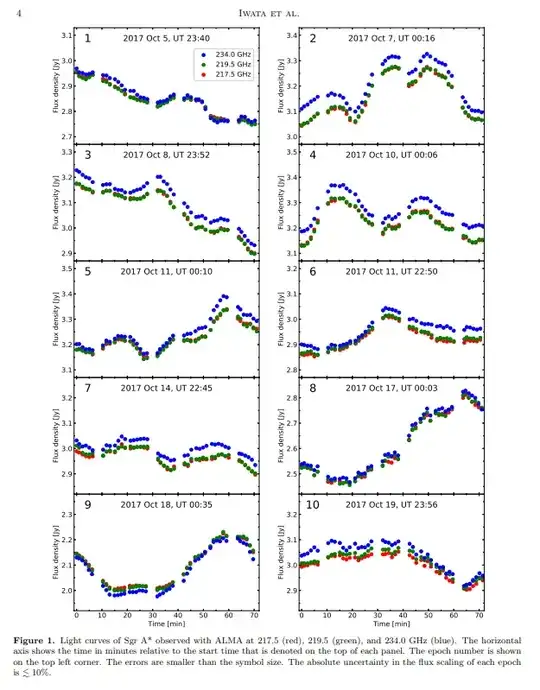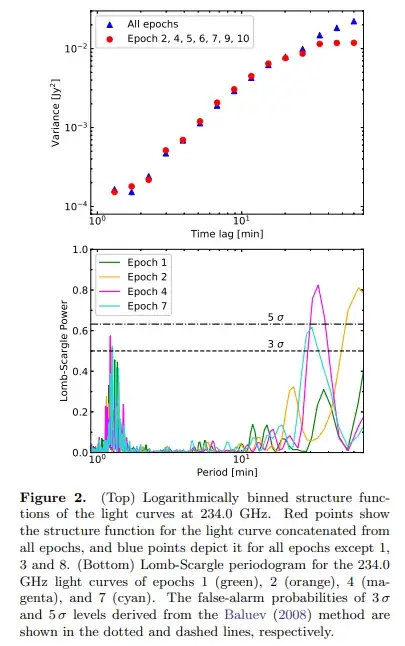Nature of the variation in signal strength
From the paper Unprecedented variability of Sgr A* in NIR mentioned in Bit Chaser's comment, Do et al. record enormous variability in the strength of emissions from SGR A* in the NIR (Near InfraRed) band typically described at about 215 THz to 400 THz. Here is a figure from their paper:

Here we see enormous variability on the order of tens of minutes. In the radio spectrum, from Time Variations in the Flux Density of Sgr A* at 230 GHz Detected with ALMA written by Iwata et al., we see much less dramatic variability, without clear periodicity, with events again on the order of tens of minutes. Here is a similar figure from their paper:

Iwata et al. also perform some Fourier analysis of their signal flux variability which reveals some "not-so-obvious" periodicities on the order of a minute or so.

Brinkerink et al. note that there are also periodic variabilities on longer timescales:
The emission from Sgr A* between frequencies of 20 GHz and 230 GHz
shows flux density variability of a few tens of percent on hour-long
timescales, up to 100% on month-long timescales, as well as occasional
flaring behavior (Dexter et al., 2013). In radio, Sgr A* has an
inverted spectrum (i.e., rising flux density with increasing
frequency) that peaks at the ’submm bump’, around 350 GHz, beyond
which the spectrum steeply drops in the infrared regime.
Proposed Mechanisms for the variation in signal strength
There are several proposed mechanisms for the signal strength variations. Brinkerink et al. and Yusef-Zadah et al. propose a relativistic colliminated outflow from SGR A* that interacts with gas and dust nearby. Yusef-Zadah et al. have this nice map from their paper: ALMA and VLA observations of emission from the environment of Sgr A*:

The authors also argue that
millimeter emission is produced by synchrotron emission from
relativistic electrons in equipartition with a ∼1.5mG magnetic field.
The origin of these is unclear but its coexistence with hot gas
supports scenarios in which the gas is produced by the interaction of
winds either from the fast moving S-stars, the photo-evaporation of
low-mass YSO disks or by a jet-driven outflow from Sgr A*.
Brinkerink et al. and Iwata et al. also talk about the synchrotron radiation, which occurs when charged particles are subject to an acceleration perpendicular to their velocity. We would expect this for any "windy" star with a close periapsis path to the black hole, passing through the massive magnetic field associated with SGR A*. An example of this cited in some of the literature is the S0-2 star, which has an orbital period of 16 years and the fastest known ballistic orbit, exceeding speeds of 1/60 the speed of light.



